A Beginner’s Checklist of Important Off-Roading Equipment
So, you’re a beginner looking to take your vehicle off-road and into the great, wide unknown. Your thirst for adventure is admirable, but satisfying it isn’t as easy as taking a hard turn off the highway and into the wilderness. Off-roading can prove dangerous and costly if you don’t know what you’re doing. Your gear and equipment are just as important as the way you drive.
The right kind of equipment can save you and your car from a pinch. We want you to be as safe as possible out on the trails and off the main roads, so we’ve created this beginner’s checklist of important off-roading equipment so you don’t get stuck without the right tools. We’ve broken the list up into what you need to add to your vehicle and what you need to keep inside your vehicle.
Car Modifications and Equipment
You can’t take a vehicle straight off the lot and go off-roading—not unless you want your trip to end in disaster. Modifying your car to handle the rigors of off-roading will protect you, your passengers, and the car itself for a long time. Read about some of the upgrades you can’t go without and others you should strongly consider.
Off-Roading Tires
There’s no two ways about it when it comes to tires: you need the right kind if you want to go off-roading. Off-roading tires come in different varieties, but they all have a few things in common. Their treads are usually deeper than those on regular tires so they can more easily grip harsh surfaces. You can get different off-road tires for rocky, muddy, and watery areas. Consider which ones will work for your trips.
Armor
To protect the delicate parts of your vehicle, like the undercarriage, you can get body armor. Modifications such as rock sliders and skid plates can go a long way to protect your vehicle from damage, especially if you’ll traverse over rocks and hills.
Bumpers and Bull Bars
You’ll likely bump into a lot of things out there. Having a strong aftermarket bumper or bull bar can keep rocks and tall grass from damaging your car’s interior components. You never know when you’ll come up against an obstacle.
Lift Kit
Lift kits, or simply improved suspension, can make your off-roading experience a lot smoother. Don’t fall into the trap of believing you need one to go off-roading. You can go without one, but if the terrain is particularly bumpy, a lifted vehicle will provide a smoother ride. And this way, you can help protect the undercarriage.
Winch
Ideally, you’ll never even need to use this, but you’ll be glad to have it if you get into a sticky situation. A winch system can pull your vehicle out of thick mud, sand, or deep water. You can combine this with a snatch block to further ensure your car’s safety when using the winch. The other benefit is that a winch on your vehicle can help out someone else who finds themselves stuck.
Snorkel
If deep water is on the docket for a season of off-roading, a snorkel will help to prevent that water from getting into your car’s air intake. Snorkel installation involves connecting your engine’s air intake to a larger pipe that takes in air from much higher up. This means you can go into deeper water without having to worry about flooding your air intake.
Lights
Off-roading trips don’t usually finish up in a short amount of time. Even if you leave early, you might drive for longer than you think. Upgrading your vehicle’s lights can help you stay out longer and aid in finding your way back to safety once the day is over. You’ll be pretty far from any city lights when you’re off-roading, so bright headlights are essential to your safety.
Secondary Equipment
This beginner’s checklist of important off-roading equipment wouldn’t be complete if we just talked about car modifications. You’ll need a few more pieces of equipment to ensure you’re safe and ready for an emergency.
First Aid Kit
No matter how careful you are, accidents can happen at any time. Make sure that you always have a first aid kit on hand. You’ll be glad you had a first-aid kit when you finally need it.
Fire Extinguisher
Many off-roading locations require you to keep a fire extinguisher in your vehicle. This is to prevent disasters like forest fires. Even if it isn’t required, you want one ready to go in case something happens to your engine.
Hi-Lift Jack
From making repairs on the trail to recovering your vehicle from a tough spot, a hi-lift jack can save the day when something goes wrong. You’ll need a stabilizing block to use this jack safely. A hi-lift jack helps lift your car so you can get underneath it and make any repairs.
Recovery Straps
In case you and your driving buddies don’t have a winch, recovery straps will help in a pinch. These straps are slightly elastic, meaning that they can exert a lot of pulling force on a vehicle to get it out of a mud pit or water hole.
Extra Fuel
Running out of fuel out on the trail is a nightmare scenario. You always want to make sure you fill up before you go off-roading, but having an extra can full of fuel is a good way to ensure you don’t strand yourself out in the middle of the wilderness.
Spare Tire
When you put your tires through a lot of stress, you can damage them more easily than you might think. A spare tire is an essential component of off-roading, unless you want to pay a hefty fee to get your car towed back into town.
We hope this checklist helps get your off-roading season off to a good start. Whether you need parts for your Jeep, upgrades for your Ford truck, or Honda Civic performance parts, American Modified has your back. We can provide you with what you need to get your car up to your exacting standards.



 Honda
Honda
 Ford
Ford
 Tesla
Tesla
 Chevrolet
Chevrolet
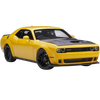 Dodge
Dodge
 Jeep
Jeep
 Toyota
Toyota GMC
GMC
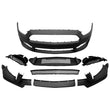
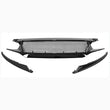
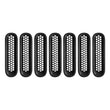



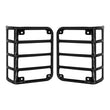



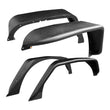
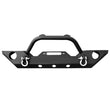

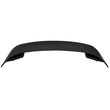


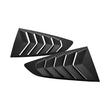
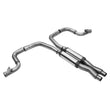






Leave a comment